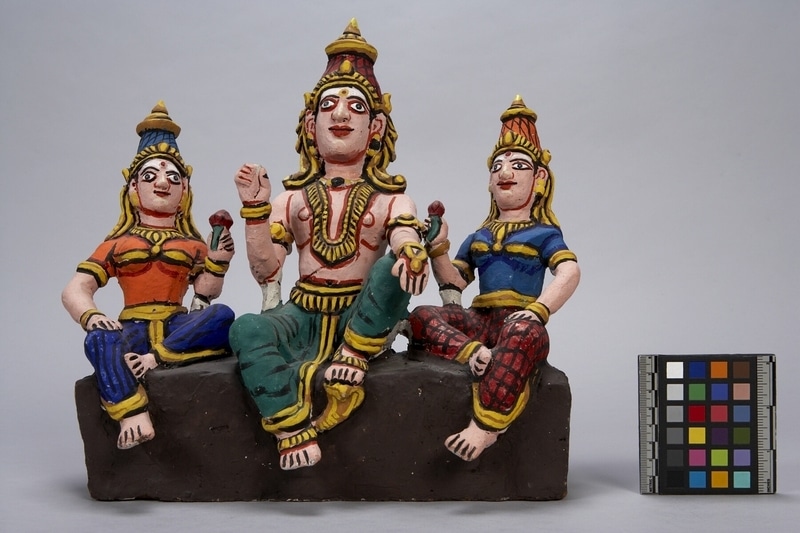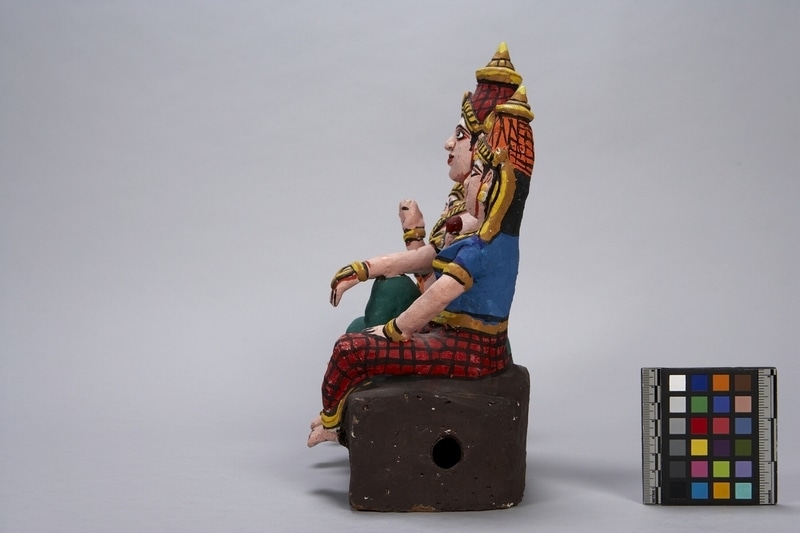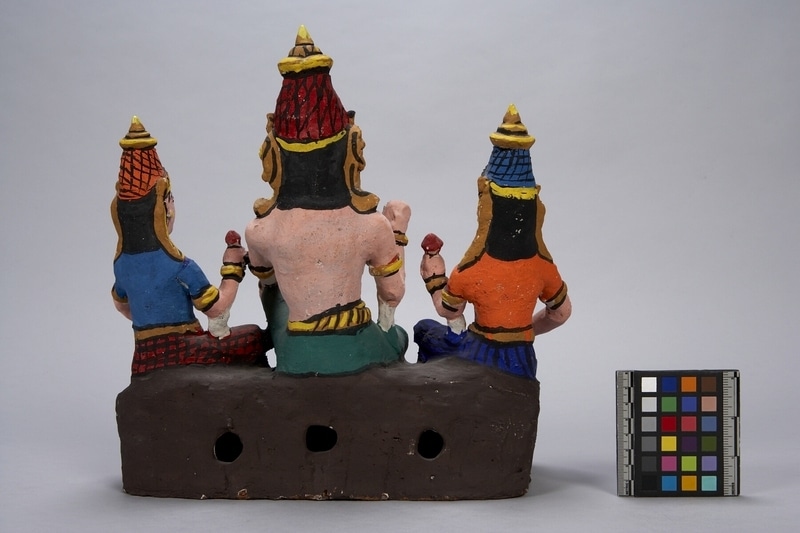Figure Item Number: Eg13 from the MOA: University of British Columbia




Description
Modeled clay figure of a seated male flanked by two seated females. All figures sit on a hollow rectangular base with small holes cut in the sides. The right arm of the central figure is raised and clutches the handle of an implement, most of which has broken off. Each of the female figures holds a flower in the hand closest to the central figure. All wear elaborate headdresses, jewelry and colourful garments. The foot of the central figure rests on the hood of a snake.
History Of Use
Figure of the village gods are made by Velar potters, usually by specific arrangement. These figures are installed during a village festival in a local village temple, in conjunction or rather than stone images. The figures are worshipped periodically and replaced with new figures as often as once a year.
Iconographic Meaning
Aiyanar: a principal god of village people in South India, flanked by his two consorts, Puskala Devi and Purna Devi. Their dress and ornament reflect their status as great king and queens. Aiyanar patrols the village boundary at night and intercedes in problems. Aiyanar's foot rests on the hood of a cobra, a symbol of great power and fertility in the villages of South India. The two consorts, assistants and companions of the god hold lotus buds in their hands, symbols of the cosmos and of enlightenment.
Cultural Context
ritual; religious offering
Item History
- Made by K. Muthusamy Velar (Maker) in Madurai, Tamil Nadu, India during February 1975
- Owned by Stephen Inglis before November 1975
- Received from Stephen Inglis (Seller) and Unknown (Funding source) during November 1975
What
Who
- Culture
- South India
- Creator
- K. Muthusamy Velar (Maker)
- Previous Owner
- Stephen Inglis
- Received from
- Stephen Inglis (Seller) and Unknown (Funding source)
Where
- Holding Institution
- MOA: University of British Columbia
- Made in
- Madurai, Tamil Nadu, India
When
- Creation Date
- during February 1975
- Ownership Date
- before November 1975
- Acquisition Date
- during November 1975
Other
- Item Classes
- ceramics; carvings & sculpture
- Condition
- good
- Current Location
- Case 104
- Accession Number
- 0400/0004